A new pest in the desert Southwest
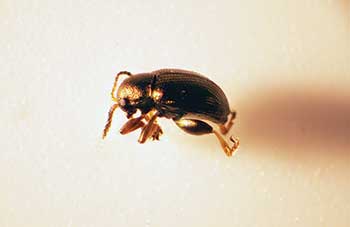
Photo 1. Adult Chaetocnema minuta isolated from damaged perennial ryegrass in southern Utah. (Photo: Ben McGraw)
As if growing turf in the Mojave Desert (the area surrounding southeastern California, southern Nevada, southwest Utah and northwest Arizona) isn’t difficult enough, turfgrass managers in the region may be dealing with an emerging insect pest issue. Regular sampling of courses in southern Utah over the past two seasons has determined that a flea beetle (Coleoptera: Chrysomelidae) is responsible for damage to perennial ryegrass decline in tee boxes and fairways during the months of July and August. Samples submitted to the Pennsylvania State University Turfgrass Entomology Laboratory in 2018 uncovered both flea beetle adults and larvae in damaged turf samples. DNA analyses were unable to provide a species match to those in genomic databases. Therefore, specimens were submitted to the USDA Systematic Entomology Laboratory in Beltsville, Md., where taxonomists identified the samples as Chaetocnema minuta Melsheimer, an insect that little is known about. Much more research is needed to answer basic questions surrounding the pest’s biology, ecology and management in turfgrass systems. Here, we report our preliminary findings to raise awareness of the problem and reduce unnecessary insecticide applications.
The flea beetle (which at present does not have a common name) is relatively small (0.08-0.12 in. or 2-3 mm) in length, ovoid and has a dark metallic coloration (Photos 1, 2). They are capable fliers but generally move by jumping. They possess large, flealike legs that allow them to spring when disturbed. The elytra, or forewings that cover the beetle’s abdomen, are lined with a series of pits. Larvae are slender worms, ranging between 0.04 to 0.2 in. (1 to 5 mm) in length, with white and brown speckled coloration, a blackened head capsule and three pairs of true legs (Photo 3).
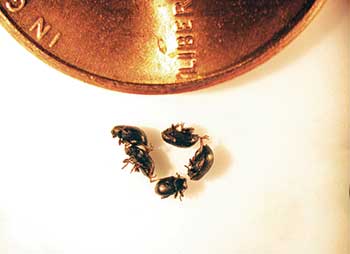
Photo 2. Relative size of C. minuta adults next to a U.S. penny. (Photo: Ben McGraw)
Turf damage appears to originate in roughs along edges of holes that border native areas (Photo 4). Damage can quickly develop on fairways where it may be exacerbated from lower mowing heights and stress from traffic (Photo 5). Damage has been documented on perennial ryegrass and to a lesser extent, Kentucky bluegrass. Anecdotal evidence indicates the flea beetle will also feed on annual bluegrass and creeping bentgrass in predominantly bermudagrass fairways. However, damage has not been reported to date on bentgrass/annual bluegrass putting greens, even though adults have been found in adjacent ryegrass collars.
It is unclear as to when and where flea beetle damage first occurred, though some turfgrass managers believe the insect may have been causing damage in southwestern Utah in the early 2000s. We have reason to believe that this insect damaged turf in the Mesquite, Nev.-St. George, Utah, area in 2002. One area course that experienced extensive turf loss during this period opened in the late 1990s with mostly bermudagrass surfaces. Damage appeared when in-play areas were overseeded in the fall with perennial ryegrass. The exact cause was not identified at the time, but a decision was made to transition to year-round perennial ryegrass/Kentucky bluegrass in 2003-2004 for improved winter tolerance. Newly constructed courses followed suit, and each summer more superintendents experienced turf decline. Superintendents were puzzled but attributed the decline to summer drought stress. This region is the driest desert in North America, receiving an average of 5 in. (~ 12.5 cm) of rain annually, and therefore, summer drought stress is common. However, several superintendents at this time noticed very small insects jumping out of the turf when inspecting damaged areas.
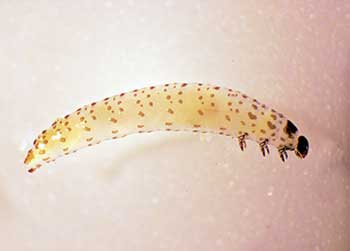
Photo 3. A second instar C. minuta larva. (Photo: Ben McGraw)
More attention was given to this mystery insect in each successive summer. In 2006, the first known insecticide applications were made, targeting what was thought to be the adult stage of the unknown insect. At this time, superintendents believed damage was caused by the dichondra flea beetle (DFB) (Chaetocnema repens) — a close relative of C. minuta — which is known to damage dichondra and bermudagrass in California home lawns. This seemed a logical conclusion since the adult DFB have a similar appearance and seasonal activity as C. minuta, and the bermudagrass sod and sprigs used to establish the Utah courses were shipped from Palm Springs. Thus, superintendents sought to manage the pest with the same approach and chemistries as those used in DFB management. However, curative insecticides provided minimal relief and often required reapplication one week later. Further complicating matters, insect and damage seemed to appear out of nowhere in late summer and vanish without a trace, leaving the turfgrass manager with only the option to regrass in fall.
A search of the literature has provided little to no insight on C. minuta ecology, apart from appearing on annotated lists of flea beetles or in faunal surveys locating the beetle within different North American cropping systems. Even these papers do not shed light on the ability of the insect to utilize different plant families. Some Chaetocnema species have been associated with cool-season grasses used as a cover crop during winter, but to our knowledge, this is the first instance of a Chaetocnema spp. utilizing a cool-season turfgrass as a summer host. Therefore, our approach has been to generate as much basic information on the insect’s seasonal activity and occurrence to develop strategies for mitigating turf loss.
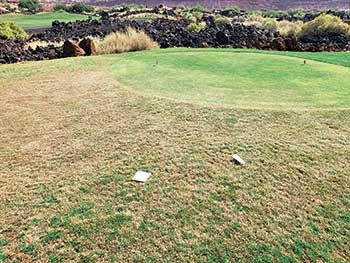
Photo 4. Damage to a perennial ryegrass rough bordering a tee box. (Photo: Adam van Dyke)
Flea beetle populations were monitored weekly on untreated perennial ryegrass fairways on two golf courses in southern Utah. Regular vacuum sampling of adult populations was performed in conjunction with sticky card trapping. Sticky card traps were placed along rough-fairway borders directly above the canopy, with one side of the sticky card facing toward the fairway and one toward the desert surrounds to intercept adults and to determine directional migration. The traps were replicated on different fairways, changed weekly and shipped to Penn State along with soil cores to isolate stages from the turf. Since larvae are small and suspected to reside within the turfgrass plant, we opted to heat extract (97 degrees F/36 degrees C) soil-turf cores using Berlese funnel traps. This method also extracts adults residing in the turf canopy. Stages drop into a collection tube over several days, counted using a microscope, and larval head capsules are measured to determine larval age.
Larvae were detected as early as April 16, though present in consistently low levels until a surge in activity was observed in the last two weeks of July. This presumed first-generation larval peak was followed a week later by the adult detection on sticky cards and within turf-soil cores (July 31). However, vacuum sampling found adults on July 25 and may be a more efficient manner to detect adults in the future. More first-generation adults were collected on sticky traps than turf cores, and greater numbers of adults were collected on sticky traps facing outward (toward the desert) prior to the first peak. These data suggest that larvae present in the turf prior to July likely contribute to only a small portion of the summer adult population, and that some adults migrate into fairways from surrounds to oviposit. Oddly, a second generation of larvae appeared in the first week of September, one week after a second peak in adults. All flea beetle activity declined sharply after mid-September.
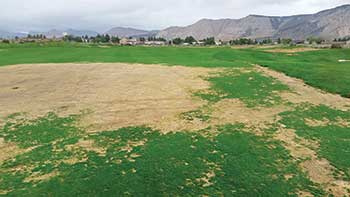
Photo 5. Flea beetle damage may be exacerbated with stress from mowing and traffic. (Photo: Adam van Dyke)
Larval head capsule measurements revealed three distinct widths or larval instars. In general, only first and second instars were observed within the turf prior to mid-May, with the first appearance of third instars in June. It appears that the larvae present in the turf prior to July develop slowly, but rapid development from egg to adult is observed in July through September. These limited data sets would suggest that second-generation adults oviposit in fall, and some eggs and/or larvae overwinter within the turf, but adults move to the surrounds.
Much more research is needed to understand the distribution and development of C. minuta populations on turf in the desert southwest. It is important to recognize that the results presented here are preliminary and require validation over time and space. The main impetus of presenting early findings is to notify area superintendents to be vigilant, but also to avoid making unnecessary insecticide applications. Several courses managing the insect apply a battery of insecticides starting as early as February. Our observations would suggest that applications prior to July are of little value. The observed rapid development of populations in summer imply that controlling adult populations with contact insecticides will require extreme precision in timing given their ephemeral nature. Larvae are less likely to be affected by contacts as they are protected within the stem of the plant. Preventive applications with systemic larvicides may be more appropriate.
Finally, the distribution of flea beetle is unclear, but there are anecdotal reports of similar damage appearing in the Las Vegas area and parts of northern Arizona, primarily on ryegrass and creeping bentgrass. We will continue to monitor populations in southern Utah to better understand seasonal occurrence, host plant damage and develop management programs. Courses that have reason to believe flea beetles are contributing to turf decline during a similar time frame are encouraged to reach out to the authors or submit samples to the Penn State Turfgrass Entomology Laboratory.
Adam Van Dyke is the owner and chief scientist of Professional Turfgrass Solutions in South Jordan, Utah. He can be reached at adam@proturfgrasssolutions.com. Benjamin A. McGraw is an associate professor of turfgrass science at Pennsylvania State University, specializing in entomology. He can be reached at bam53@psu.edu.










